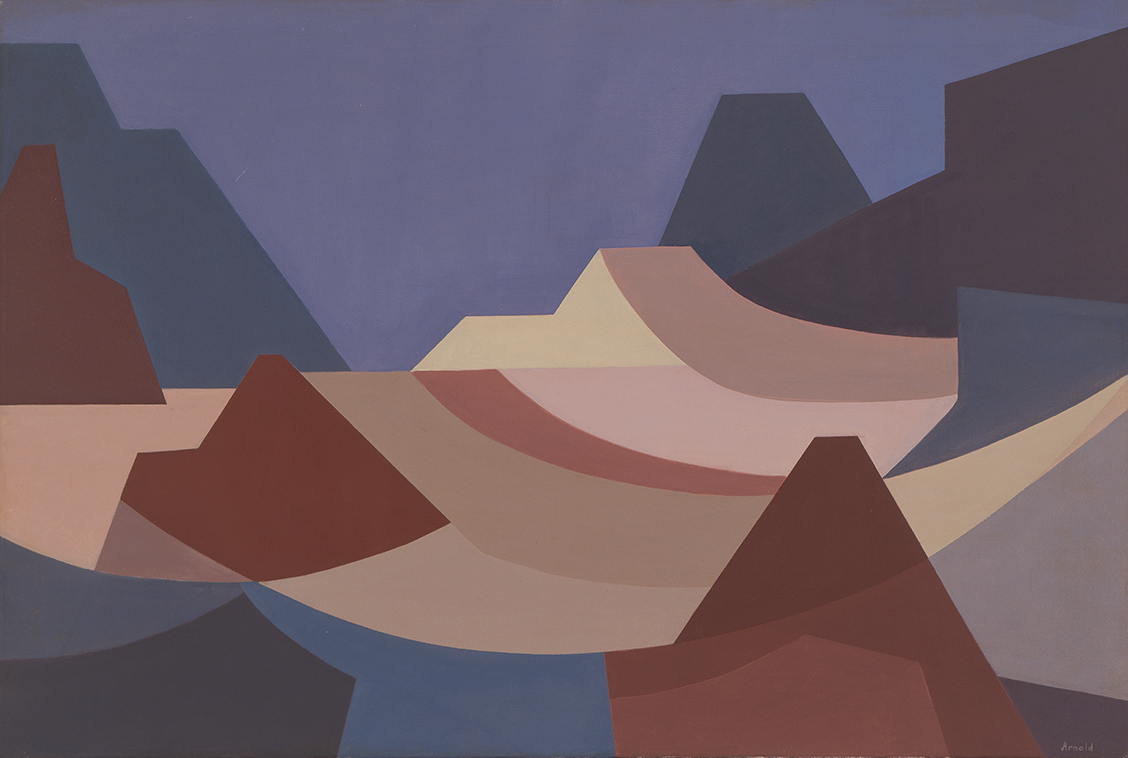
Landscape
Florence Arnold
Staff Pick | Monthly Muse July 2021
Florence Arnold’s Landscape (1959), with its warm purple and brown hues, conveys a continuity between shadow and light, night and day, land and sky. Its geometric shapes resemble temples, radiating a sense of the sublime and infusing the work with a spiritual component. As someone born and raised in Central Europe, I am compelled by Arnold’s desert setting, so unlike anything I knew in my old life, at once evoking and contradicting the myth of the “New World.” What pulls me into this desert landscapes is the feeling of history it inspires, which is at odds with the settler narrative of California as a new and emerging space. It is impossible to look at rocks formed by millions of years of erosion and exposure to the elements and not get a sense of deep time, geological and human.
On a visceral level, the landscape serves as a visual reminder of history. Arnold’s juxtaposition of the ancient and the modern is a new take on an old theme, one she achieves through the abstract breakdown of the landscape into simplified shapes and colors. The painting’s generic title transcends locale, and its ordered and highly aestheticized portrayal of a complex space suggests tensions inherent in the American West.
Sara Černe
Former Interim Project Analyst and Executive Assistant, Langson IMCA
